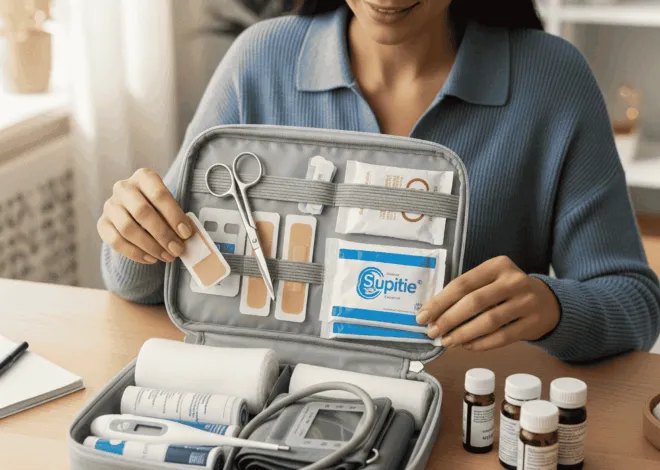Pregnancy and childbirth exact an enormous toll on a woman’s body. It is transforming and beautiful, but when a mother does not get the physical and emotional support she needs, the effects can be devastating.
I am a new mother, three times over. Each time after I have given birth, I have benefited enormously from physical therapy afterwards. I could not stand strong, fit, and wholly healed without it.
I am also a physical therapist, myself, and feel that every woman should know her rights to receive physical therapy as a new mother. One of the many fields of specialization in physical therapy is women’s health. I bet you didn’t know that. That’s okay. Most doctors don’t either.
A physical therapist (PT) in women’s health is dedicated to helping women get their bodies back after birth. They can treat a myriad of issues, including pelvic and back pain, incontinence, and other ailments. The American Physical Therapy Association’s 2010-11 report titled Today’s Physical Therapist: A Comprehensive Review of a 21st-Century Health Care Profession, states “physical therapists are committed to facilitating each individual’s achievement of goals for function, health, and wellness.” The core values of a physical therapist are “altruism, accountability, integrity, clinical excellence, social responsibility, and compassion.”
The sad fact, though, is that most new mothers will never get the therapy they desperately need after giving birth.
But I am passionate about turning the tide. All too often, women in general, not just new mothers, do not receive the health care they need. Read my article which reviews the shocking statistics about the crisis in women’s health care today in the US.
A Prime Example of Falling Through the (Medical) Cracks
I have had patients and friends who have suffered from pelvic pain, sexual dysfunction, painful scarring, chronic incontinence, and lower back pain for so long that it has severely altered their quality and enjoyment of life.
A friend recently came to me asking for advice for another girlfriend. Let’s say her name is Teresa. Teresa had just undergone major abdominal surgery (think C-section) and was having awful abdominal pains and even headaches.
Knowing that the two are related, based on her surgery type and plan of care, I immediately asked if the surgeon had referred her to physical therapy. Of course the answer was no. Her plan of care did not include any post-operative physical therapy. In fact, when I asked Teresa directly, she said her doctor (a woman, mind you) had never even mentioned needing physical therapy.
I was upset by what I felt was an oversight by the physician to refer Teresa to therapy, but mostly I felt a surge of urgency to help her. This woman needed therapy immediately, yesterday, even. She was floundering, depressed, in pain, and alone at home six weeks after major surgery on her reproductive organs due to a cancer scare. She had no idea how to get better (she had been a marathoner) now that she had this huge scar (larger than that of a C-section) across her abdomen. Even coughing caused pain, and the related headaches and back pain were terrifying.
But, it was not the doctor’s fault. Not really.
Doctors are educated very little, if at all, about PT services in medical school. A good friend with an MD sister said this when asked if she had learned about PT in medical school: “sure, we had education about what PT’s do in medical school. It was a single lecture, on one day, it was optional, and it covered all allied health care services.”
Physical therapists spend a similar amount of time in earning their degree in physical therapy (7-8 years) as doctors do in medical training. There really is no way a single optional lecture in medical school can prepare physicians to know what PT’s do and how to refer for physical therapy.
The Take Home Message
Be your own advocate in health care. Before going into surgery or giving birth, educate yourself about what to expect and what you will need for your body to heal fully.
The biggest mistake a mother can make in seeking maternity care is assuming her doctor knows best. The doctor may not even know PT’s treat women’s health issues, much less how to refer to PT for prenatal or postpartum rehabilitation.
There is good news though. Here are the tools you need to get physical therapy after giving birth:
First, BEFORE you give birth, ask your doctor is he/she refers to physical therapy after giving birth. If you already have low back or pelvic pain during pregnancy, then you should get a referral for physical therapy now. Do not wait until after giving birth.
When asked why you need it (physical therapy), you can give them these four reasons:
1. Managing Urinary and Fecal Continence
No mother wants to leak urine or worse, feces, after giving birth. But the reality is that if you have given birth, or are about to, you have an increased chance of doing just that. Women who are obese or have had multiple children are at an even higher risk: about four times higher. The risk of incontinence also increases with age, even if you have never had children.
The good news is that physical therapists treat incontinence (both stress and urge related) without invasive methods. No surgery and no drugs. A 2003 study in the International Urogynecology Journal revealed almost half of 144 mothers studied experienced urinary incontinence during and immediately after pregnancy. Eight weeks out, 38% still were suffering from urinary incontinence, and 6 women reported both urinary and fecal incontinence. This study, and many others which support its findings, found that “there is a need for a strategy to prevent and treat urinary incontinence during these periods.”
More good news is another study reporting that pelvic floor muscle exercises, are “quite effective in the augmentation of the pelvic floor muscle strength and consequently in the treatment of urinary incontinence.” New mothers should seek physical therapy to remedy a weak or damaged pelvic floor..
2. Prevent Scar Tissue Adhesions & Pelvic Pain
Pelvic pain is more common than ever, in part because of the US’s astronomical rate of C-sections. The reported C-section rate is currently 33%, the highest in US history. Scarring is a natural part of the healing process, but when left to heal on their own after C-sections or abdominal surgery, incision sites (or tears or episiotomies from childbirth) can cause permanent pain.
Low back pain, sexual dysfunction, and painful intercourse are all reported side effects of unabated scarring. When an incision or tear interrupts the skin, the body responds by laying down connective tissue which assists the body in healing, from the inside out, so to speak. However, the layers of tissue between muscles, and the layers of muscles themselves can all scar together, leaving a lumpy, painful, and even unsightly mess. Scarring can cause permanent pain if left untreated, which is why I recommend women seek PT after surgery, or if they have suffered a perineal tear or cut from an episiotomy.
3. Manage Low Back Pain
Over 80% of Americans suffer from lower back pain, and I would dare to guess that an equal or greater percentage of pregnant women suffer from some type of back pain. The good news is that a physical therapist can determine why and how the back pain occurs, and can help manage it during and after pregnancy.
Aquatic therapy, manual or massage therapy, electrotherapies, yoga, Pilates, and therapeutic exercise are all ways that a PT can help you feel your best during and after pregnancy. Not all back and belly pain in expectant mothers is a direct result of pregancy though. There are many reasons for back pain, which go far beyond the standard round ligament pain.
Sometimes pain can arise from deep pelvic muscle imbalance, pelvic mis-alignment, spinal issues, or mis-alignment in pubic symphysis, sacroiliac joint, or the lumbosacral junction. The point is, physical therapists are the experts in evaluating, diagnosing, and helping you manage your pain and discomfort in this area.
4. Wellness for Future Pregnancies and Daily Life
Physical therapists are also experts in the field of fitness, prevention, and wellness. Because PT’s are experts in knowing how the body works, they can design a personalized treatment plan to fit your needs. Whether you are a marathoner, an avid gardener, or a couch potato looking to make better lifestyle choices, a PT can help you get your body back, and/or prepare it for future pregnancies.
Pre-surgical physical therapy is often utilized and covered under insurance for surgeries of the knee or shoulder, for example. Most women will report that giving birth, either vaginally or by C-section, is one of the most physically demanding, “marathon-like” events of their life. However, very few women receive physical therapy to prepare their bodies for and recover after childbirth. This unfortunate oversight must end.
Final Tips for Getting the Physical Therapy You Need:
Here’s the happy ending: Teresa is now happily receiving PT (and you can too!). She wrote to me saying, “Thank you so much for all your help Ginger….and for even making me aware of needing this (physical therapy) because I surely would never have known!”
- A good PT will follow up with your doctor and communicate with him/her to coordinate your care.
- “A PT is dedicated to community responsibility by participating in community agency activities, educating the public, formulating public policy, or providing pro bono physical therapy services.” – APTA (This means a PT will work to help provide the services you need, even if you cannot afford it.)
- You have the right to choose your own PT. Your doctor does not choose for you.
- Many states have direct access to physical therapy. This means you do not need your doctor’s referral or a script to see a PT. PT’s are considered specialists as is stated by the American Physical Therapy Association because “they know how to manage all four of the body’s major systems: musculoskeletal, neuromuscular, cardiovascular/pulmonary, and integumentary (skin) – to restore and maximize mobility.” If you are uncertain about your access to PT, call your insurance company and ask them what your PT benefits are and if you need a referral to access them.
- If you do need a doctor’s script for PT, but the doctor is not comfortable writing the prescription for it, they can simply write: Physical Therapy Evaluation and Treatment for postpartum physical therapy (or prenatal if it is during pregnancy).
Remember, physical therapy can improve your quality of life.





